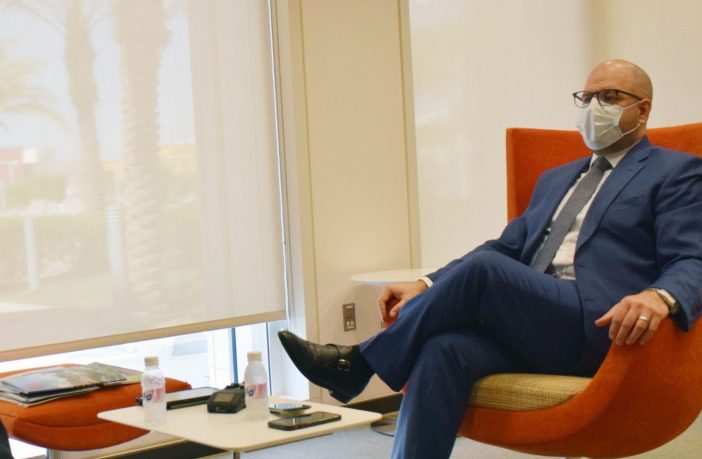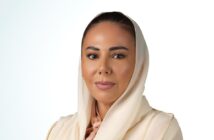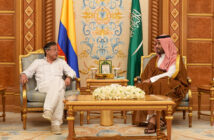An Interview with the U.S. Consul General Ryan M. Gliha
The United States has a long history in the Western Region of Saudi Arabia, especially in Jeddah. Jeddah was home to the first U.S. diplomatic mission to the Kingdom in 1942, which was then elevated to an embassy in 1949. Back in the 1940s, the Embassy was located in the old part of Jeddah, in Al-Balad. In the 1950s, the U.S. mission moved to Al Hamra district and remained there until 2019. In 2019, the U.S. Consulate General in Jeddah moved to a new consulate compound in Al-Mohammadiyah district.
This move to the new consulate has become a symbol of a strong commitment to the U.S.-Saudi relations. It is important to note that in addition to the new building in Jeddah, a new consulate in Dhahran and Embassy in Riyadh will be built to symbolize the pledge to constant and productive U.S.-Saudi collaboration.
The U.S. Consul General Ryan M. Gliha assumed his post on September 16th, 2018. Since February 4th, 2020, C.G. Gliha also serves as the U.S. Representative to the Organization of Islamic Cooperation, headquartered in Jeddah.
I had a great opportunity to sit down with Consul General Ryan M. Gliha to talk about bilateral relations between the two countries.
As a career Diplomat, you have mainly served in the Middle East. How do your assignments in the Middle East challenge you, and what is the most rewarding part of your service?
I love this region and I love the people that I have come to know over years of service here. My very first assignment as a U.S. diplomat was in Jeddah, nearly twenty years ago, so it will always have a special place in my heart. Since then, I have served in Lebanon twice, Yemen, and Qatar, which gave me a chance to learn more about the core issues at the heart of this vital region.
I was thrilled when I learned that I would be returning to Jeddah for the second time. This is an exciting time to be living and working in Saudi Arabia. I see opportunities for joint initiatives in the arts and entertainment, in tourism, in developing sustainable and renewable sources of energy, in developing the Kingdom’s human capital, and for working toward peace and stability in the region.
The 75th anniversary of the meeting between President Franklin D. Roosevelt and King Abdulaziz was celebrated in 2020. In general, how do leaders’ meetings and reciprocal visits contribute to multilateral progress? How has the concept of leadership changed over 75 years?
It is important to note that we are not just marking 75 years since the first meeting. This year, we are celebrating 75 years of a partnership that keeps growing and evolving. Of course, we have a shared interest in developing the vast petroleum resources in Saudi Arabia and in working together to ensure security in the region. But the relationship between the United States and Saudi Arabia extends far beyond those areas now.
Saudi Arabia’s Vision 2030 lays out a bold roadmap for the future of the Kingdom. We have seen how Saudi Arabia continues to grow into a global leader, as it presides over the G20 this year. Tens of thousands of Saudi students’ study at American universities each year and return home to invest their time and talents in building the future of their country. And while American businesses remain strong partners in the energy sector, innovative American companies have also expanded their interests into sectors that are emerging out of Vision 2030, including infrastructure development, logistics, transportation, healthcare, and tourism, to name just a few.
This is an important moment in our relationship and the United States is committed to working with Saudi Arabia as it works to realize Vision 2030.

During the 21st century, the business community has become an inseparable part of politics and diplomacy. Can you discuss the business potential of the Western Region of Saudi Arabia?
The business potential of the Western Region is massive and still growing. Vision 2030 lays out ambitious and groundbreaking plans to diversify Saudi Arabia’s economy through increased trade and investment with the United States and other countries. We are committed to supporting this plan.
The Western Region enjoys a strong competitive advantage and is well situated to play a leading role in helping Saudi Arabia realize Vision 2030. Several emerging sectors have already attracted the attention of U.S. investors and the international business community, including logistics and transportation; hospitality, entertainment, and tourism; healthcare; trade and retail; construction and real estate development.
The focus provided by Vision 2030 makes this an unprecedented time to do business in the Kingdom. I believe that the Western Region offers some of the most unique and potentially profitable opportunities in the country, ranging from the research and start-up possibilities emerging from the world-class King Abdullah University of Science and Technology, to the massive opportunities offered by the Giga-projects in the area, and all the way to the burgeoning sports and entertainment-related sectors. As Saudi Arabia looks to beyond energy, U.S. companies will make excellent partners for growth and development.
One of the central features of Vision 2030 is the participation of women in community and country development. As such, Princess Reema Al Saud became the first woman Ambassador to the U.S. Can you discuss the role of women in community and politics?
We are excited to see the increasing role of women at all levels in Saudi Arabia. Research has shown that when women are economically empowered, they re-invest in their families and communities, producing a multiplier effect that spurs economic growth and contributes to peace and stability. In addition, when women are involved in discussions about the future, their contributions lead to countries that are more stable, peaceful, and prosperous.
Saudi women play a vital role in Vision 2030 and in developing the future of Saudi Arabia. From the Jeddah municipality, to the Muslim World League, from the Shura Council, to the growing movement of successful women entrepreneurs and business leaders in the Kingdom, we are witnessing a powerful and positive change. An important sign of that change came with the 2019 appointment of Princess Reema as Ambassador to the United States – the first ever female ambassador from the Kingdom of Saudi Arabia. I saw that her appointment was followed recently by a second female ambassador from the Kingdom, this time to Norway.
How would you describe the Western Region, and what makes this part of the Kingdom so special?
Like the West Coast of the United States, Western Saudi Arabia weaves together the strands of different cultures and customs in a unique and vibrant tapestry. Situated on the Red Sea, this region has a long history of welcoming visitors who, for centuries, have come to worship, to trade, and to live.
Of course, the holy cities of Mecca and Medina make this region uniquely important in the eyes of the world’s 1.8 billion Muslims. Millions come each year as pilgrims, facilitated by the modern infrastructure built by the Saudi government and hosted by the thousands of local citizens who play an important role in making each pilgrimage meaningful.
With its long history as a center for trade and commerce, we might say that business is in the DNA of Saudi Arabia’s west coast. Vision 2030 seeks to build on the history of the Western Region, the capacity of the local workforce, and its strategic location by making the region home to several Giga-projects: Neom, Amaala, Red Sea Islands, Al-Ula, Jeddah Downtown and King Abdullah Economic City. Together with ongoing projects, these large-scale investments will translate to opportunities for economic development and an even stronger economic partnership between American and Saudi companies.




